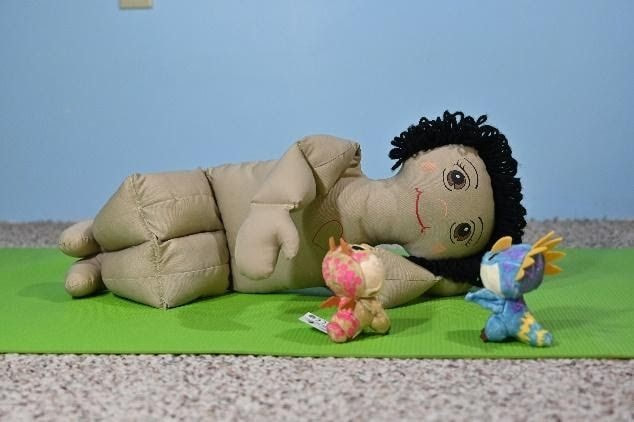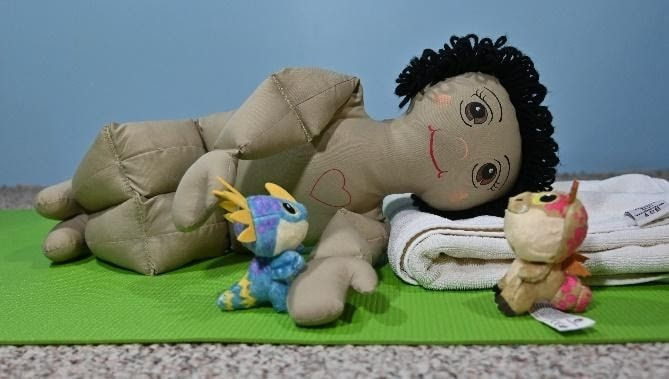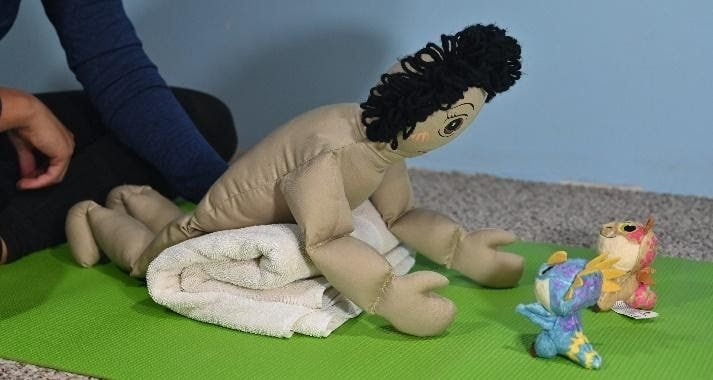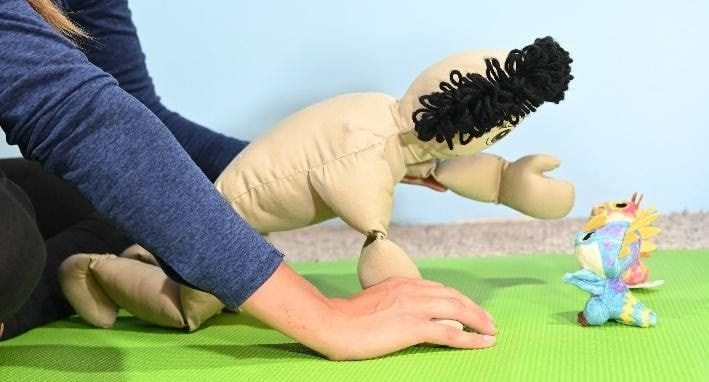- Home
-
Resources
-
Exercise & Activities
>
-
Strength
>
- Full Body - Motor Planning & Gross Motor Activities
- Full Body - Kicking
- Full-Body Crab Walking
- Full Body - Laundry Basket Push/Pull
- Legs - Lower Extremity Strengthening Activities
- Legs - Step ups onto a stool
- Legs - Squatting
- Arms
- Core - Core Stability & Upper Extremity Strengthening Activities
- Core - Core exercise on pillow
- Core - Four Point
- Core - Using Bubbles for Core Strength
- Coordination >
- Balance >
- Stairs >
-
Strength
>
- Sensory Motor >
- Stretches & Flexibility >
- Caregivers Tips >
- Equipment Use >
- By Diagnosis >
- Outdoor Activities
-
Exercise & Activities
>
- Contact
- Bulletin Board
Positioning
*There are many options for positioning your child. Please consult your Physical Therapist to see what options are best for your child along with duration and frequency.
Supine
Position child on their back. This is helpful to stretch out the child’s chest muscles. To make this fun for your child you can use their favorite toys to engage them. By moving the toy from one side of the child’s body to the other will engage the child in turning head towards the toy.
Supine
Position child on their back. This is helpful to stretch out the child’s chest muscles. To make this fun for your child you can use their favorite toys to engage them. By moving the toy from one side of the child’s body to the other will engage the child in turning head towards the toy.
Supported Sitting
Have your child seated on floor or another stable surface. Use pillows to help support the child’s back to maintain an upright position. As the child’s strength improves you can gradually remove pillows from behind them and allow them to maintain a seated position independently. To engage your child, use their favorite toys. You can work on head turning by moving the toy from one side of the child’s body to the other.
Have your child seated on floor or another stable surface. Use pillows to help support the child’s back to maintain an upright position. As the child’s strength improves you can gradually remove pillows from behind them and allow them to maintain a seated position independently. To engage your child, use their favorite toys. You can work on head turning by moving the toy from one side of the child’s body to the other.
DO NOT: Have your child sit in a W sitting position as seen in the image below. As this can create tight muscles in the legs and hips and may inhibit normal movements in your child. If your child has problems with W sitting consult your physical therapist for advice.
Side lying
Position child on their R or L side. It is beneficial to alternate sides to evenly engage and stretch muscles on both sides of the body. Position 1 you have the child side lying with no support under their head. Position 2 you can have a folded towel or pillow under the child’s head for support in a neutral position.
Position 1:
Position child on their R or L side. It is beneficial to alternate sides to evenly engage and stretch muscles on both sides of the body. Position 1 you have the child side lying with no support under their head. Position 2 you can have a folded towel or pillow under the child’s head for support in a neutral position.
Position 1:
Prone
Position child on their stomach (Position 1). This is helpful to stretch out the child’s core and hip muscles while strengthening their neck and back muscles. To make this fun for your child you can use their favorite toys to engage them. If your child has tight hips or is not tolerating being on their stomach well, you can use towels and pillows to support under their hips (Position 2). As the gain comfort while on their stomach you can gradually room the towel or pillow support.
Position child on their stomach (Position 1). This is helpful to stretch out the child’s core and hip muscles while strengthening their neck and back muscles. To make this fun for your child you can use their favorite toys to engage them. If your child has tight hips or is not tolerating being on their stomach well, you can use towels and pillows to support under their hips (Position 2). As the gain comfort while on their stomach you can gradually room the towel or pillow support.
Position 1
Position 2
Quadruped
Position child on hands and knees (Image 1). If needed you can provide support at the child’s hips. This position is helpful to strengthen the child’s arm and core muscles. To make this fun for your child you can use their favorite toys to engage them. You can have your child reach in various directions (forward, sideways, and crossbody) to work on coordination and strength (Image 2). If your child is refusing to use one hand you can use hand over hand constraint (Image 3).
Position child on hands and knees (Image 1). If needed you can provide support at the child’s hips. This position is helpful to strengthen the child’s arm and core muscles. To make this fun for your child you can use their favorite toys to engage them. You can have your child reach in various directions (forward, sideways, and crossbody) to work on coordination and strength (Image 2). If your child is refusing to use one hand you can use hand over hand constraint (Image 3).
|
Image 1
|
Image 2
|
Image 3
| Positioning.pdf | |
| File Size: | 492 kb |
| File Type: | |
- Home
-
Resources
-
Exercise & Activities
>
-
Strength
>
- Full Body - Motor Planning & Gross Motor Activities
- Full Body - Kicking
- Full-Body Crab Walking
- Full Body - Laundry Basket Push/Pull
- Legs - Lower Extremity Strengthening Activities
- Legs - Step ups onto a stool
- Legs - Squatting
- Arms
- Core - Core Stability & Upper Extremity Strengthening Activities
- Core - Core exercise on pillow
- Core - Four Point
- Core - Using Bubbles for Core Strength
- Coordination >
- Balance >
- Stairs >
-
Strength
>
- Sensory Motor >
- Stretches & Flexibility >
- Caregivers Tips >
- Equipment Use >
- By Diagnosis >
- Outdoor Activities
-
Exercise & Activities
>
- Contact
- Bulletin Board












